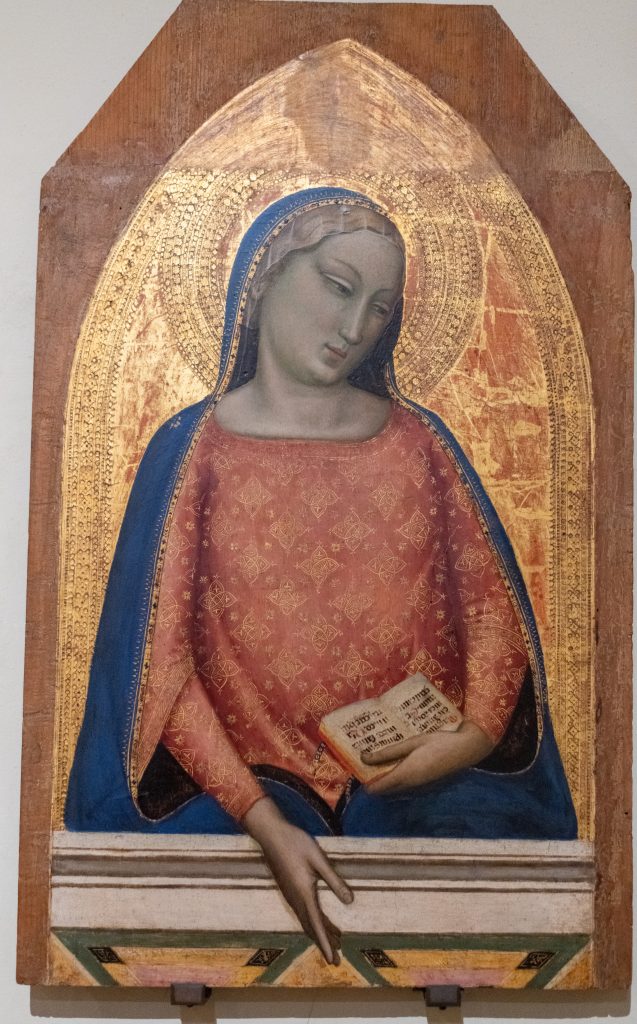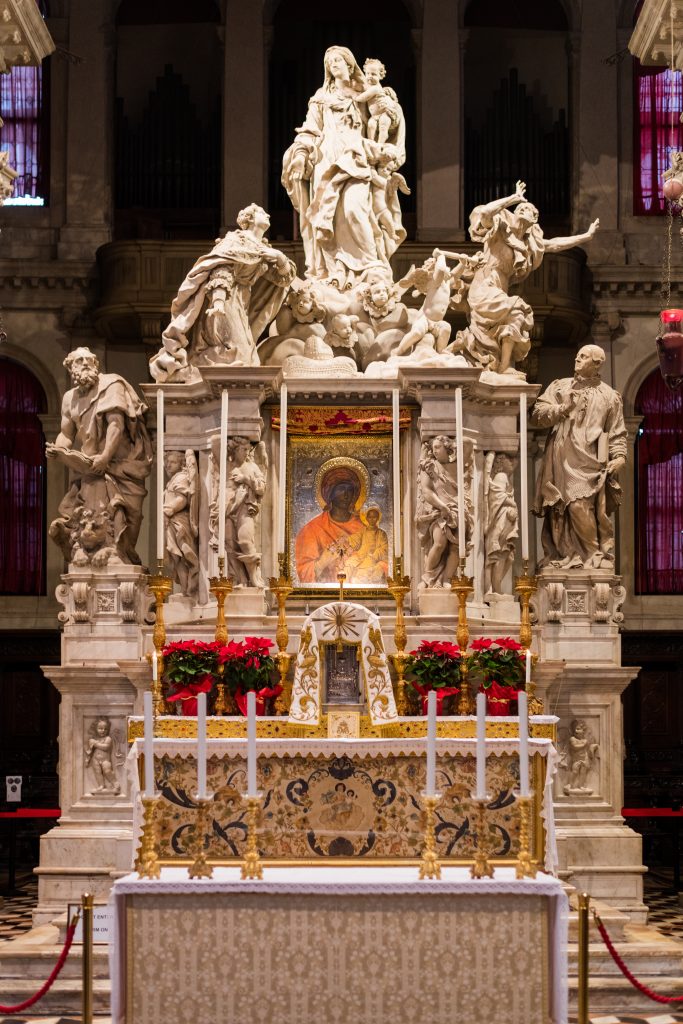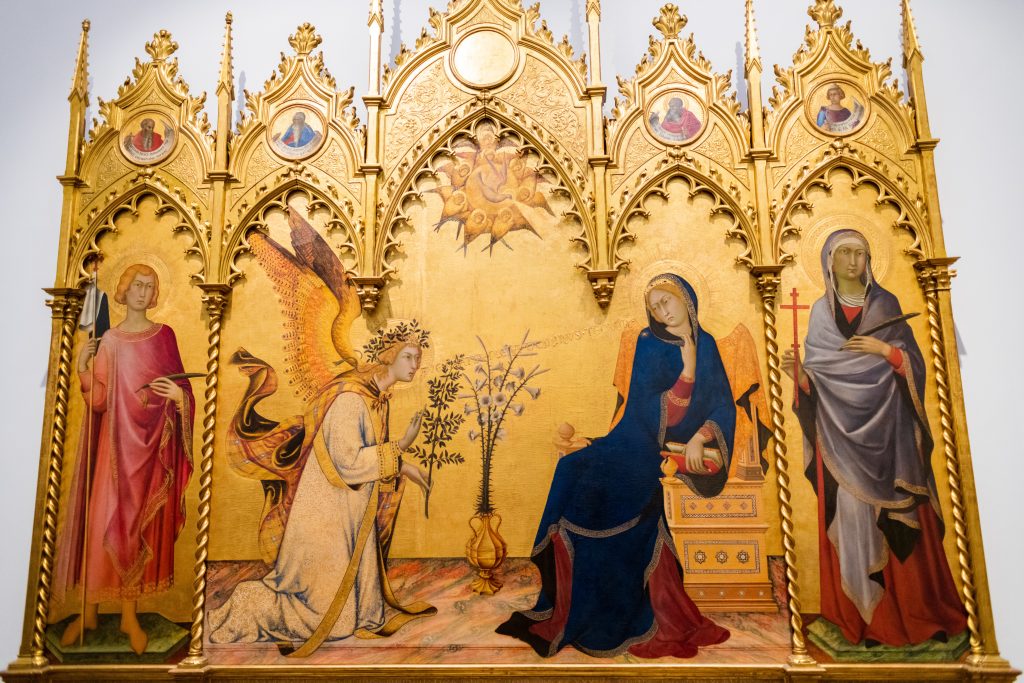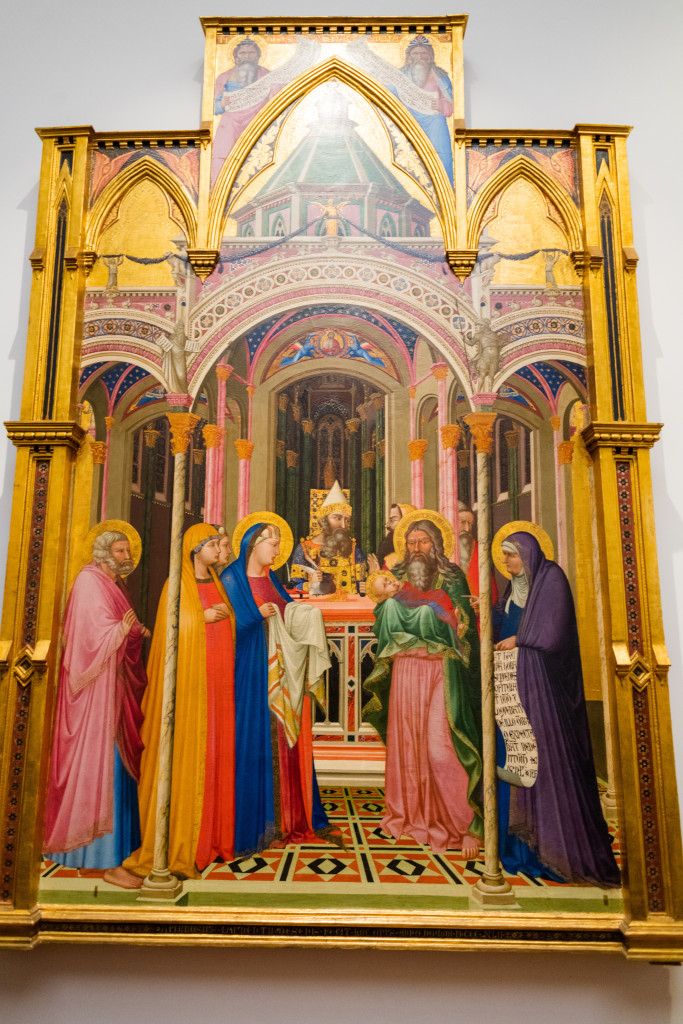Mary
Mother of God
Mary, the Mother of God, figures prominently in Catholic and Orthodox traditions, but her theological space is reduced in the modern Protestant tradition. Mary’s historical presence is symbolically acknowledged in Protestant evangelicalism, but her serene presence in the Nativity crèche belies a dynamic, physical presence in the story of Jesus. The biblical narrative provides hints of Mary’s life, and though her story is eclipsed by a much grander narrative, Mary is a vibrant and stalwart witness to the birth, the life, and the death of Jesus.




Scripture reveals that Mary was a young Jewish woman living in first century Nazareth, a small town in the Roman city-state of Galilee, and general scholarship places her between thirteen and sixteen years of age. Having found favor with God, Mary was visited by an angelic messenger and given a choice to carry the infant Jesus in her womb, as evidence by her consent, “I am the Lord’s slave…may it be done to me according to your word” (Luke 2:38). Mary was engaged at this time and according to Jewish custom, the engagement period provided Mary with the legal protection of marriage, though the relationship would not be consummated until the wedding ceremony. The veneration of Mary throughout church history often neglects the physicality of her motherhood. Along with the social and emotional challenges of her experience, the young woman endured all of the human aspects of carrying and delivering a baby into the world.
From her introduction into the narrative of Scripture, the stalwart faith that would care for God in the flesh was stirring in Mary’s soul, expressed in her poem of praise, the Magnificat. Mary’s physical presence is noted throughout the childhood of Jesus. Matthew’s narrative describes the Magi finding the child with his mother, and later describes their escape from genocide, when Joseph took the child and His mother to Egypt (Matthew 2:11-14). Luke’s narrative provides more insight into Mary’s role as mother, describing her ritual trip to Jerusalem for the Jewish Passover Festival (Luke 2:41). The Apostle John tells the story of Jesus’ first miracle, and Mary is present in the scene, conversing with her adult son. Mark’s narrative provides a glimpse of Mary visiting Jesus during his ministry, but her most poignant appearance is found in John 19:25, when the writer describes Mary standing near the cross where her son was dying a cruel death. Present for the birth, the life, the death, and the resurrection of Jesus, Mary was a powerful witness to the Gospel and her witness continues into the present age.
Iconography of Mary
Artwork depicting the mother of Jesus occupies a vast and hallowed space in art history. Artistic mediums from marble to pastels attempt to give form to the young woman who carried Jesus in her womb, and the mother that held his lifeless body in her arms. As early as the second century, images of Mary began to appear and throughout various periods of history, her iconography has inspired the church. Within the Eastern Orthodox and Roman Catholic traditions especially, Mary is a figure of import, occupying honored space in the liturgy and architecture of church worship.
Resources:
- McKnight, Scot. The Real Mary: Why Evangelicals Christians Can Embrace the Mother of Jesus. Brewster, MA: Paraclete Press, 2007.
- Milliner, Matthew J. Mother of the Lamb: The Story of a Global Icon. Minneapolis, MN: Fortress Press, 2022.
- Peeler, Amy. Women and the Gender of God. Chicago: Wm. B. Eerdmans Publishing Co., 2022.
